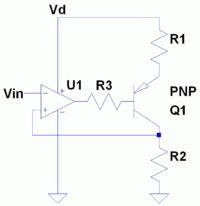~analoger~
Banned
For an ideal OpAmp, is it always the case that the voltage of the inverting input follows the voltage of the noninverting input and not the other way around? And probably this is what distinguishes both inputs when doing analysis regardless of current direction and voltage polarity assumptions.
Thanks.
Thanks.
